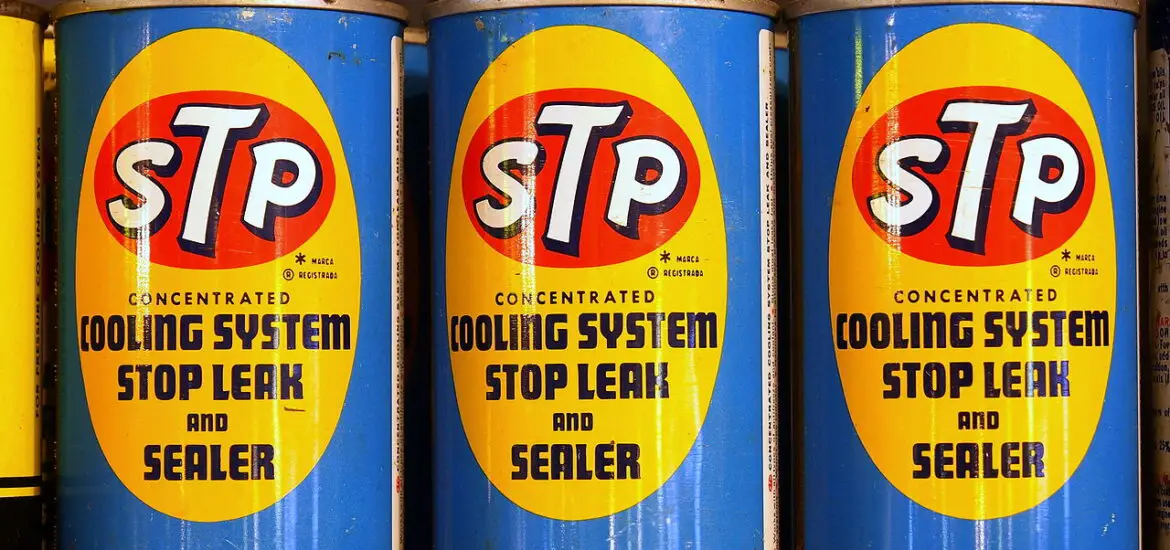Refrigerant with stop leak is more than just a magic potion for your HVAC woes—it’s a tool for quick fixes and a lifeline in emergency situations. In this guide, we’re going to break down everything you need to know about this versatile substance, from understanding its unique characteristics to its pros and cons.

This work is licensed under a Creative Commons Attribution-ShareAlike 3.0 Unported License.
Table of Contents
Understanding Refrigerant with Stop Leak
Definition of Refrigerant with Stop Leak
Simply put, a refrigerant with stop leak is a two-in-one package. It’s a cooling agent (that’s your refrigerant part) mixed with additives designed to seal minor leaks in your HVAC system. Sounds pretty cool, huh?
The Role of Refrigerants
Without refrigerants, there’d be no chill in your air conditioner. These chemical compounds are the workhorses in your cooling systems, absorbing heat from your living spaces and releasing it outside.
The Function of Stop Leak Additives
Stop leak additives, on the other hand, are the fix-it guys. When there’s a minor leak, these additives work to fill it in, patching your cooling system up and preventing refrigerant loss.
How Refrigerants with Stop Leak Work
The Sealing Process
When your HVAC springs a minor leak, these stop leak additives spring into action. They react with moisture at the leak site and form a seal, preventing further refrigerant escape. Think of it as a band-aid for your AC!
Limitations and Capabilities
But like a band-aid, stop leak isn’t always enough. It’s great for minor leaks, but larger issues may require more serious intervention—like professional repairs.
Types of Refrigerant with Stop Leak
Commercially Available Brands
From Super Seal to Leak Freeze, there’s a smorgasbord of refrigerant with stop leak brands on the market. But which one’s right for your cooling needs? That’s what we’re here to find out.
Comparison of Popular Brands
Some brands, like A/C Pro, come with easy-to-use application kits, while Leak Freeze boasts compatibility with a wide range of refrigerants. As the old saying goes, it’s all about horses for courses—choose the one that suits your system best.
Variations by Refrigerant Type
Stop Leak for R-22 Systems
For those clinging onto their old R-22 systems, don’t worry—there’s a stop leak for you too. Brands like Super Seal offer products specifically designed for your antiquated, yet beloved, cooling systems.
Stop Leak for R-134a Systems
Have a car with a leaky A/C? You’re probably dealing with R-134a refrigerant. Luckily, there are stop leaks like A/C Pro that are designed for automotive applications.
Stop Leak for R-410A Systems
For the latest and greatest in home cooling—R-410A systems—there’s Leak Freeze. It’s formulated to be compatible with these systems, offering quick and efficient leak repair.
How to Use Refrigerant with Stop Leak
Precautions Before Use
Leak Detection
Before you go squeezing that stop leak into your system, make sure you actually have a leak. Tools like leak detection kits can help you pinpoint the problem.
Assessing Leak Severity
Remember, stop leaks aren’t miracle workers—they can’t fix huge leaks or damaged components. You need to assess the severity of your leak to see if a stop leak is the right solution.
Step-by-Step Instructions
Preparing the System
Once you’ve determined a stop leak is appropriate, it’s time to prep your system. This can involve cleaning the application area and ensuring the system is properly depressurized.
Applying the Refrigerant with Stop Leak
Now comes the exciting part—applying the stop leak. This typically involves attaching the product to your system’s service port and allowing the system to suck in the stop leak with the refrigerant.
Monitoring Post Application
After applying the stop leak, keep an eye on your system. Check for changes in cooling performance and observe if the leak persists.
To read more in-depth articles on refrigerants, click here: Articles on Refrigerants: The Ultimate Guide to Understanding Them
Pros and Cons of Using Refrigerant with Stop Leak
Benefits of Using Stop Leak Refrigerants
Cost Savings
Stop leaks can save you a pretty penny by avoiding costly service calls and refrigerant top-ups. Not too shabby, right?
Temporary Leak Repair
In a bind, stop leaks can buy you time, patching up minor leaks and keeping your system running until professional repairs can be made.
Drawbacks and Potential Risks
Ineffectiveness for Large Leaks
Remember, stop leaks have their limitations. They’re no match for larger leaks or mechanical damage, so don’t expect miracles if your system is seriously compromised.
Potential System Damage
Improper use of stop leaks can potentially harm your system, blocking critical components or causing unwanted chemical reactions. Always follow instructions and use responsibly.
When to Seek Professional Assistance
Recognizing Unmanageable Leaks
Symptoms of Serious Leaks
Repeated need for refrigerant top-ups, poor cooling performance, and visible damage are all signs your system may need professional help. Don’t ignore these red flags!
Benefits of Professional Leak Repair
Thorough Leak Detection
Professional HVAC technicians have the tools and knowledge to detect even the smallest leaks, ensuring nothing gets overlooked.
Guaranteed Repair Quality
With a professional repair, you get peace of mind knowing the job’s been done right. Plus, many repairs come with warranties for that extra bit of reassurance.
Conclusion
Key Takeaways
Refrigerant with stop leak is a versatile tool for managing minor HVAC leaks. But like all tools, it has its place and isn’t a one-size-fits-all solution. Understanding its capabilities, limitations, and proper usage is key to getting the most out of this handy product.
Final Thoughts on Refrigerant with Stop Leak
So there you have it—your complete guide to refrigerant with stop leak. Whether you’re patching up a minor leak or just trying to squeeze a bit more life out of your old R-22 system, this handy substance has a lot to offer. But remember, when in doubt, always turn to a professional. Happy cooling!